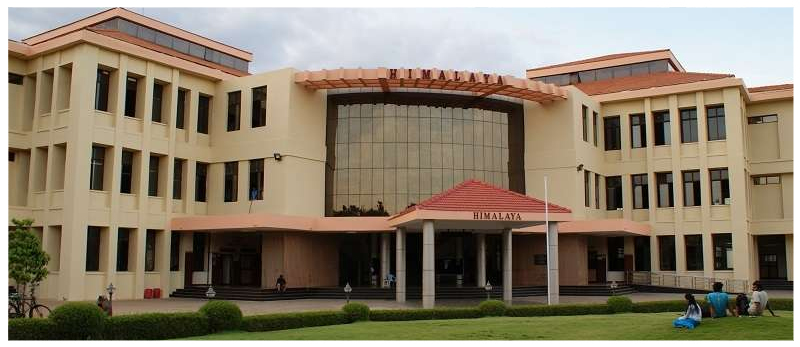If you own satellites, you get better quality data.
Space has always fascinated mankind; Elon Musk, Jeff Bezos and Richard Branson have in recent times made it particularly alluring with innovations that have dramatically changed the economics of space flights.
In India too, many fascinating entrepreneurial projects are underway involving everything from building and launching indigenously made rockets and satellite constellations, to analysing com plex satellite imagery for finding mineral resources and monitoring agricultural and environmental effects.
IIT-Madras, is building a launch vehicle that will take small satellites
2/6
Srinath Ravichandran and Moin SPM’s AgniKul Cosmos, based out of IIT-Madras, is building a launch vehicle that will take small satellites to low-Earth orbits. Both are aeronautical engineers. Agnikul is simplifying the rocket structure and using 3D printing to enable a customer to launch with in a two-week timeframe.
Ravichandran says their sub- systems are easily realisable, and don’t have complex assembly pro- cedures. “We’ve reached a point where the entire rocket engine can be 3D-printed in one shot. This saves a lot of time and money, and is very efficient in reducing mass and errors,” he says.
These techniques also make their rockets highly customisable Just like you can get a laptop with a bigger screen size or hard drive, we can configure the vehicle to give the optimum solution.”
Ravichandran says.
Skyroot hopes to launch the first rocket by the end, of this year
3/6
Former ISRO scientists Pawan Kumar Chandana and Naga Bharath Daka’s Hyderabad-based Sky root Aerospace is also building launch vehicles. Skyroot hopes to launch the first rocket by the end, of this year. Like Agnikul, they too are trying to democratise space by reducing costs. Chandana says Skyroot’s launch vehicles are rockets and space tugs in one-giving the launch vehicle the capability to place satellites into different orbits in a single launch. (Space tugs are spacecraft used to transfer cargo from one orbit to another orbit with different energy characteristics.) “Our rocket’s upper stage is capable of many restarts. It’s like Uber’s car-pooling service, where all customers are dropped to their required destination in the same cab,” says Chandana.
Another major effort has been to build satellites that can accomplish specialised tasks the way Musk’s Starlink uses advanced satellites to enable high-speed internet.
Micro earth-imaging satellites that can provide real time and affordable satellite imagery.
4/6
Awais Ahmed and Kshitij Khandelwal’s Pixxel is building a constellation of micro earth-imaging satellites that can provide real time and affordable satellite imagery “We build the hardware that goes to space and beams down images, and we build the platform that enables an organisation to convert those images into action able insights,” says Ahmed.
Ahmed and Khandelwal realised early on that existing satellite constellations were blind to certain problems. “For example, if we wanted to identify and map pest infestations and crop diseases in agriculture, we could not do that. We also could not identify air and water pollution levels accurately. So, we decided to use hyperspectral imagery to capture information in 50 times more detail than existing multispectral RGB (red, green, blue) data,” Ahmed says.
If all goes well, Pixxel could be launching the world’s first hyper spectral satellite constellation. The company has already inked partner ships with companies in agricultural mining, and gas, including mining major Rio Tinto.
Analysing satellite imagery for the banking and financial services.
5/6
Prateep Basu Abhishek Raju’s SatSure another venture that’s attempting useful in sights from analysing satellite imagery for the banking and financial services sector-to enable them, instance, make credit appraisals of farmers based on cropping tern images. So far, the company relied satellite imagery from third-party sources. But this, Basu says, has drawbacks terms of pricing and image resolution. So, the company has designed a satellite payload. “If we the entirety of the value chain, we offer higher quality insights to customers. Which is why are determined have our own resolution, optical multispectral fleet satellites,” Basu says.
Micro satellites-those that weight between 1 kg and 300kg
6/6
Sanjay Nekkanti and Krishna Teja’s Dhruva Space one of the first private space ventures in India, is into three major segments-launch vehicles, satellites, and ground infrastructure. It’s building cubesats or nanosatellites, and micro satellites-those that weigh between 1 kg and 300kg. It enables customers to launch satellites by building interfaces, called deployers, between the launch vehicle and the spacecraft. It builds ground stations for command and control of satellites at the customers locations.
Nekkanti says they have architected their satellite platforms with mass production in mind. “The platforms, together with our deployers, allow customers to launch multiple satellites at one go, which reduces their cost as well as overall time for launch drastically,” he says. This year, Dhruva expects to launch at least two small satellites and also test its deployers.
What ISRO began in 1969, now many others are joining in. There’s plenty of excitement ahead.
Souce : The times of india
Akhil George & Swati Rathor | TNN




